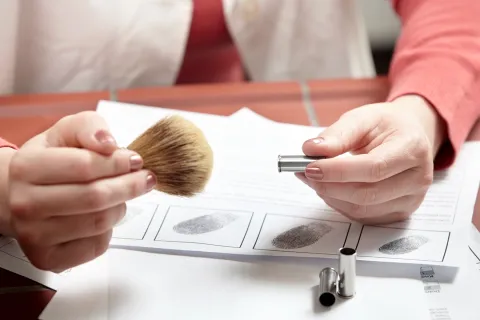
Cosmetic products have an estimated worth of €67bn in Europe, which is regarded as a massive enterprise. The primary requirement during the development of a cosmetic product is to ensure protection for the user’s health which is also the basis of the cosmetic legislation. This protection also enables increased consumer confidence in the brand.
COSMETIC LEGISLATION
Cosmetics regulation is the main regulatory framework for finished cosmetic products in the EU market. The main aim of the regulation is to ensure protection of consumer’s health and making consumer’s well informed by monitoring the composition and labeling of products and assessment of product safety and mainly focusing on the prohibition of animal testing.
The first law governing the manufacture and marketing of safe cosmetic products was introduced in the European Union (EU) in 1976 in the form of a Directive (76/768/EEC). The Cosmetics Regulation, adopted in 2009, replaces Directive 76/768/EC that was adopted in 1976 and had been substantially revised on numerous occasions.
Since 11 July 2013, the new EU Regulation 1223/2009 (Cosmetics Regulation) is in force.
- It strengthens the safety of cosmetic products and streamlines the framework for all operators in the sector
- The regulation simplifies procedures to the extent that the internal market of cosmetic products is now a reality
WHAT’S NEW IN COSMETIC REGULATION?
STRENGTHENED SAFETY REQUIREMENTS FOR COSMETIC PRODUCTS:
Manufacturers must follow specific requirements for preparation of a product safety report ahead of placing a product on the market. As per Scientific Committee on Consumer Safety (SCCS) guidelines, a cosmetic product made available on the market shall be safe for human health when used under normal or reasonably foreseeable conditions of use, taking in account like instructions for use and disposal, labeling and any other indication or information provided by the responsible person.
COSMETICS PRODUCT SAFETY REPORT:
Assessment of safety, which is also deemed as full safety assessment, is to be conducted by a responsible person on the basis of the relevant information. A cosmetic product safety report (CPSR) needs to be generated for every cosmetic product prior to placing the products in the market. In accordance to SCCS guidelines, data on Serious Undesirable Effects (SUE) as well as on any undesirable effect become part of the CPSR. There are two sections in a CPSR, the first section covers “cosmetics safety information” while the second section covers “cosmetics safety assessment”.
In addition, No Observed Adverse Effect Level (NOAEL) is the starting point used to calculate the margin of safety (MoS). It is compulsory to state the reasons, if there is no relevant assessment performed. Furthermore, the microbiological quality report and stability test report must also be submitted before safety assessors embark on the final signing of cosmetics safety reports.
REPORTING OF SERIOUS UNDESIRABLE EFFECTS
A responsible person will be in charge of notifying Serious Undesirable Effects (SUE) to competent national authorities who will also collect information from users and health professionals. The information will be readily available to share within other EU Member States.
NEW RULES FOR THE USE OF NANO MATERIALS IN COSMETIC PRODUCTS:
Colorants, preservatives UV-filters and nanomaterial’s must be explicitly authorized and other nanomaterial’s present in a product which are not restricted by the Cosmetics Regulation will be the object of a full safety assessment at the EU level. Nanomaterials must be labeled in the ingredients list with the word ‘nano’ in brackets following the name of the substance, e.g. “titanium dioxide (nano)”.
INTRODUCTION OF THE NOTION OF ‘RESPONSIBLE PERSON’:
As per SCCS guidelines, prior to placing the cosmetic product on the market the responsible person shall submit, the following information to the Commission by electronic means
- Category of cosmetic product and its name
- Name and address of the responsible person
- Country of origin
- Member State in which the cosmetic product is to be placed on the market
- Contact details of a physical person
- The presence of substances in the form of nanomaterial
- The name and the Chemicals Abstracts Service (CAS) or EC number of substances classified as carcinogenic, mutagenic or toxic for reproduction (CMR)
COSMETIC PRODUCTS NOTIFICATION PORTAL:
It is a centralized notification procedure opted throughout EU for all cosmetic products placed on the EU market. Before placing a product in the market, every manufacturer has to ensure that the product is notified in EU Cosmetic Products Notification Portal (CPNP). It is a free of charge online notification system; CPNP has been created for the implementation of Regulation (EC) No 1223/2009 on cosmetic products. As it is a one-time procedure there is no need for any further notification at the national level in the EU. All information is available electronically to Competent Authorities and Poison Centre’s or similar bodies.
PRODUCT INFORMATION FILE:
For every cosmetic product (placed on market) there is a Product Information file created and maintained by the responsible person for a period of ten years (following the date on which the last batch of the cosmetic product was placed on the market).
It is mandatory to have listed all ingredients in the cosmetic container labels using identical terms based on the International Nomenclature for Cosmetics Ingredients (INCI) across the whole European Union.
Label should include:
- Name and address of the manufacturer, importer or distributor
- Nominal content by weight or volume
- Date of minimum durability or Period After Opening (PAO) for products lasting more than 30 months
- Precautions to be observed in use
- Goods identification reference (e.g. a batch number/ manufacturing code)
- Function of the product (unless it is clear from the presentation)
FREE MOVEMENT:
Member States shall not, refuse, prohibit or restrict cosmetic products availability on the market which comply with the requirements of regulation.
BAN ON ANIMAL TESTING:
As per new regulation and guidelines, it is stated as not to have any testing of finished cosmetic products and cosmetic ingredients on animals in the European Union









